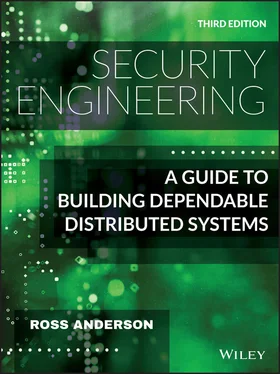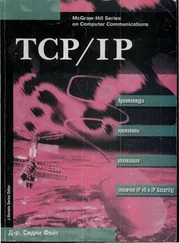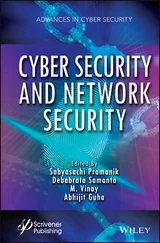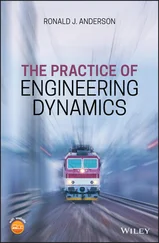Ross Anderson - Security Engineering
Здесь есть возможность читать онлайн «Ross Anderson - Security Engineering» — ознакомительный отрывок электронной книги совершенно бесплатно, а после прочтения отрывка купить полную версию. В некоторых случаях можно слушать аудио, скачать через торрент в формате fb2 и присутствует краткое содержание. Жанр: unrecognised, на английском языке. Описание произведения, (предисловие) а так же отзывы посетителей доступны на портале библиотеки ЛибКат.
- Название:Security Engineering
- Автор:
- Жанр:
- Год:неизвестен
- ISBN:нет данных
- Рейтинг книги:3 / 5. Голосов: 1
-
Избранное:Добавить в избранное
- Отзывы:
-
Ваша оценка:
Security Engineering: краткое содержание, описание и аннотация
Предлагаем к чтению аннотацию, описание, краткое содержание или предисловие (зависит от того, что написал сам автор книги «Security Engineering»). Если вы не нашли необходимую информацию о книге — напишите в комментариях, мы постараемся отыскать её.
secure? Understand how to engineer dependable systems with this newly updated classic
In
Cambridge University professor Ross Anderson updates his classic textbook and teaches readers how to design, implement, and test systems to withstand both error and attack.
This book became a best-seller in 2001 and helped establish the discipline of security engineering. By the second edition in 2008, underground dark markets had let the bad guys specialize and scale up; attacks were increasingly on users rather than on technology. The book repeated its success by showing how security engineers can focus on usability.
Now the third edition brings it up to date for 2020. As people now go online from phones more than laptops, most servers are in the cloud, online advertising drives the Internet and social networks have taken over much human interaction, many patterns of crime and abuse are the same, but the methods have evolved. Ross Anderson explores what security engineering means in 2020, including:
How the basic elements of cryptography, protocols, and access control translate to the new world of phones, cloud services, social media and the Internet of Things Who the attackers are – from nation states and business competitors through criminal gangs to stalkers and playground bullies What they do – from phishing and carding through SIM swapping and software exploits to DDoS and fake news Security psychology, from privacy through ease-of-use to deception The economics of security and dependability – why companies build vulnerable systems and governments look the other way How dozens of industries went online – well or badly <l

 with a random nonce
with a random nonce  , and use a hash function
, and use a hash function  to combine them:
to combine them:
 as its round function. The result, the combination
as its round function. The result, the combination  , is then encrypted with RSA and sent. The recipient then computes
, is then encrypted with RSA and sent. The recipient then computes  as
as  and recovers
and recovers  as
as  [213]. This was eventually proven to be secure. There are a number of public-key cryptography standards; PKCS #1 describes OAEP [995]. These block a whole lot of attacks that were discovered in the 20th century and about which people have mostly forgotten, such as the fact that an opponent can detect if you encrypt the same message with two different RSA keys. In fact, one of the things we learned in the 1990s was that randomisation helps make crypto protocols more robust against all sorts of attacks, and not just the mathematical ones. Side-channel attacks and even physical probing of devices take a lot more work.
[213]. This was eventually proven to be secure. There are a number of public-key cryptography standards; PKCS #1 describes OAEP [995]. These block a whole lot of attacks that were discovered in the 20th century and about which people have mostly forgotten, such as the fact that an opponent can detect if you encrypt the same message with two different RSA keys. In fact, one of the things we learned in the 1990s was that randomisation helps make crypto protocols more robust against all sorts of attacks, and not just the mathematical ones. Side-channel attacks and even physical probing of devices take a lot more work. (mod
(mod  ); PKCS #7 describes simple mechanisms for signing a message digest [1010]. However, in some applications one might wish to include further data in the signature block, such as a timestamp, or some randomness to make side-channel attacks harder.
); PKCS #7 describes simple mechanisms for signing a message digest [1010]. However, in some applications one might wish to include further data in the signature block, such as a timestamp, or some randomness to make side-channel attacks harder. , when decrypted as
, when decrypted as  (mod
(mod  ), corresponds to a PKCS #1 message, then he could use this to decrypt or sign messages [265]. There have been many more side-channel attacks on common public-key implementations, typically via measuring the precise time taken to decrypt. RSA is also mathematically fragile; you can break it using homomorphisms, or if you have the same ciphertext encrypted under too many different small keys, or if the message is too short, or if two messages are related by a known polynomial, or in several other edge cases. Errors in computation can also give a result that's correct modulo one factor of the modulus and wrong modulo the other, enabling the modulus to be factored; errors can be inserted tactically, by interfering with the crypto device, or strategically, for example by the chipmaker arranging for one particular value of a 64-bit multiply to be computed incorrectly. Yet other attacks have involved stack overflows, whether by sending the attack code in as keys, or as padding in poorly-implemented standards.
), corresponds to a PKCS #1 message, then he could use this to decrypt or sign messages [265]. There have been many more side-channel attacks on common public-key implementations, typically via measuring the precise time taken to decrypt. RSA is also mathematically fragile; you can break it using homomorphisms, or if you have the same ciphertext encrypted under too many different small keys, or if the message is too short, or if two messages are related by a known polynomial, or in several other edge cases. Errors in computation can also give a result that's correct modulo one factor of the modulus and wrong modulo the other, enabling the modulus to be factored; errors can be inserted tactically, by interfering with the crypto device, or strategically, for example by the chipmaker arranging for one particular value of a 64-bit multiply to be computed incorrectly. Yet other attacks have involved stack overflows, whether by sending the attack code in as keys, or as padding in poorly-implemented standards. is a number whose powers generate all the nonzero numbers mod
is a number whose powers generate all the nonzero numbers mod  ; for example, when working modulo 7 we find that
; for example, when working modulo 7 we find that  = 25 which reduces to 4 (modulo 7), then we can compute
= 25 which reduces to 4 (modulo 7), then we can compute  as
as  or
or  which is 20, which reduces to 6 (modulo 7), and so on, as in Figure 5.17.
which is 20, which reduces to 6 (modulo 7), and so on, as in Figure 5.17. , we can always solve the equation
, we can always solve the equation  (mod 7);
(mod 7);  is then called the discrete logarithm of
is then called the discrete logarithm of  modulo 7. Small examples like this can be solved by inspection, but for a large random prime number
modulo 7. Small examples like this can be solved by inspection, but for a large random prime number  , we do not know how to do this efficiently. So the mapping
, we do not know how to do this efficiently. So the mapping  (mod
(mod  ) is a one-way function, with the additional properties that
) is a one-way function, with the additional properties that  and
and  . In other words, it is a one-way homomorphism . As such, it can be used to construct digital signature and public key encryption algorithms.
. In other words, it is a one-way homomorphism . As such, it can be used to construct digital signature and public key encryption algorithms.









